
Building operations company Johnson Controls (NYSE:JCI) fell short of the market’s revenue expectations in Q3 CY2024, with sales falling 9.5% year on year to $6.25 billion. Its non-GAAP profit of $1.28 per share was 2.6% above analysts’ consensus estimates.
Is now the time to buy Johnson Controls? Find out by accessing our full research report, it’s free.
Johnson Controls (JCI) Q3 CY2024 Highlights:
- Revenue: $6.25 billion vs analyst estimates of $7.32 billion (14.6% miss)
- Adjusted EPS: $1.28 vs analyst estimates of $1.25 (2.6% beat)
- Adjusted EPS guidance for the upcoming financial year 2025 is $3.45 at the midpoint, missing analyst estimates by 5%
- Gross Margin (GAAP): 36.3%, up from 32% in the same quarter last year
- Operating Margin: 8.6%, in line with the same quarter last year
- EBITDA Margin: 12.1%, down from 16.8% in the same quarter last year
- Free Cash Flow Margin: 18.5%, similar to the same quarter last year
- Organic Revenue rose 10% year on year (2.1% in the same quarter last year)
- Market Capitalization: $50.01 billion
"We are very pleased with our strong end to the fiscal year and our fourth quarter results, which delivered double-digit organic sales growth and robust margin expansion," said George Oliver, Chairman and CEO.
Company Overview
Founded after patenting the electric room thermostat, Johnson Controls (NYSE:JCI) specializes in building products and technology solutions, including HVAC systems, fire and security systems, and energy storage.
Commercial Building Products
Commercial building products companies, which often serve more complicated projects, can supplement their core business with higher-margin installation and consulting services revenues. More recently, advances to address labor availability and job site productivity have spurred innovation. Additionally, companies in the space that can produce more energy-efficient materials have opportunities to take share. However, these companies are at the whim of commercial construction volumes, which tend to be cyclical and can be impacted heavily by economic factors such as interest rates. Additionally, the costs of raw materials can be driven by a myriad of worldwide factors and greatly influence the profitability of commercial building products companies.
Sales Growth
Examining a company’s long-term performance can provide clues about its business quality. Any business can put up a good quarter or two, but the best consistently grow over the long haul. Unfortunately, Johnson Controls’s 1.9% annualized revenue growth over the last five years was sluggish. This shows it failed to expand in any major way, a rough starting point for our analysis.
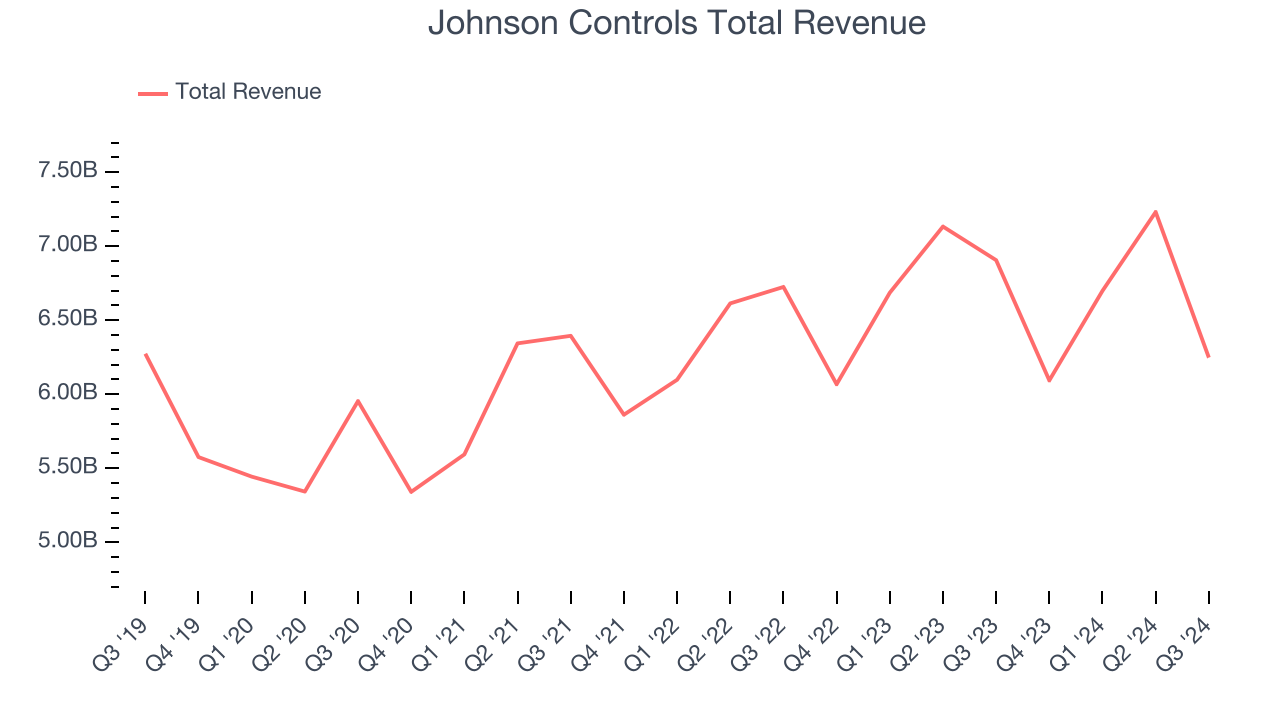
We at StockStory place the most emphasis on long-term growth, but within industrials, a half-decade historical view may miss cycles, industry trends, or a company capitalizing on catalysts such as a new contract win or a successful product line. Johnson Controls’s annualized revenue growth of 1.9% over the last two years aligns with its five-year trend, suggesting its demand was consistently weak. 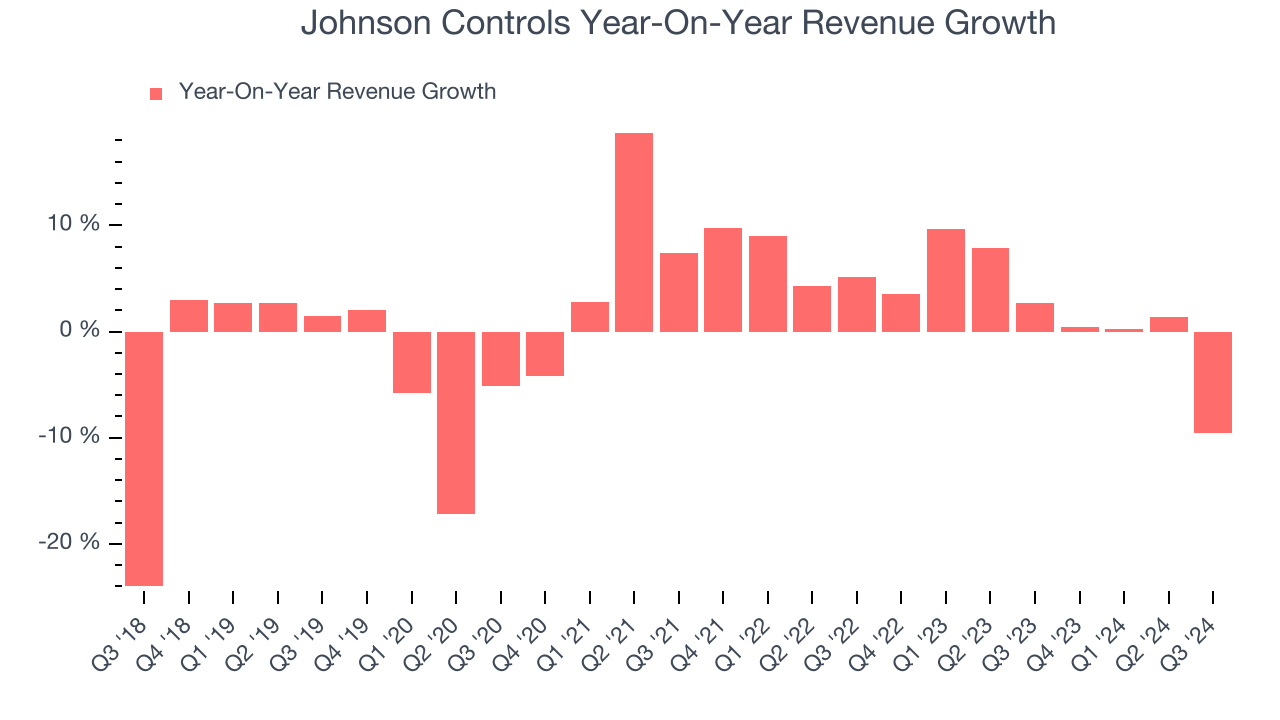
Johnson Controls also reports organic revenue, which strips out one-time events like acquisitions and currency fluctuations because they don’t accurately reflect its fundamentals. Over the last two years, Johnson Controls’s organic revenue averaged 5.7% year-on-year growth. Because this number is better than its normal revenue growth, we can see that some mixture of divestitures and foreign exchange rates dampened its headline performance. 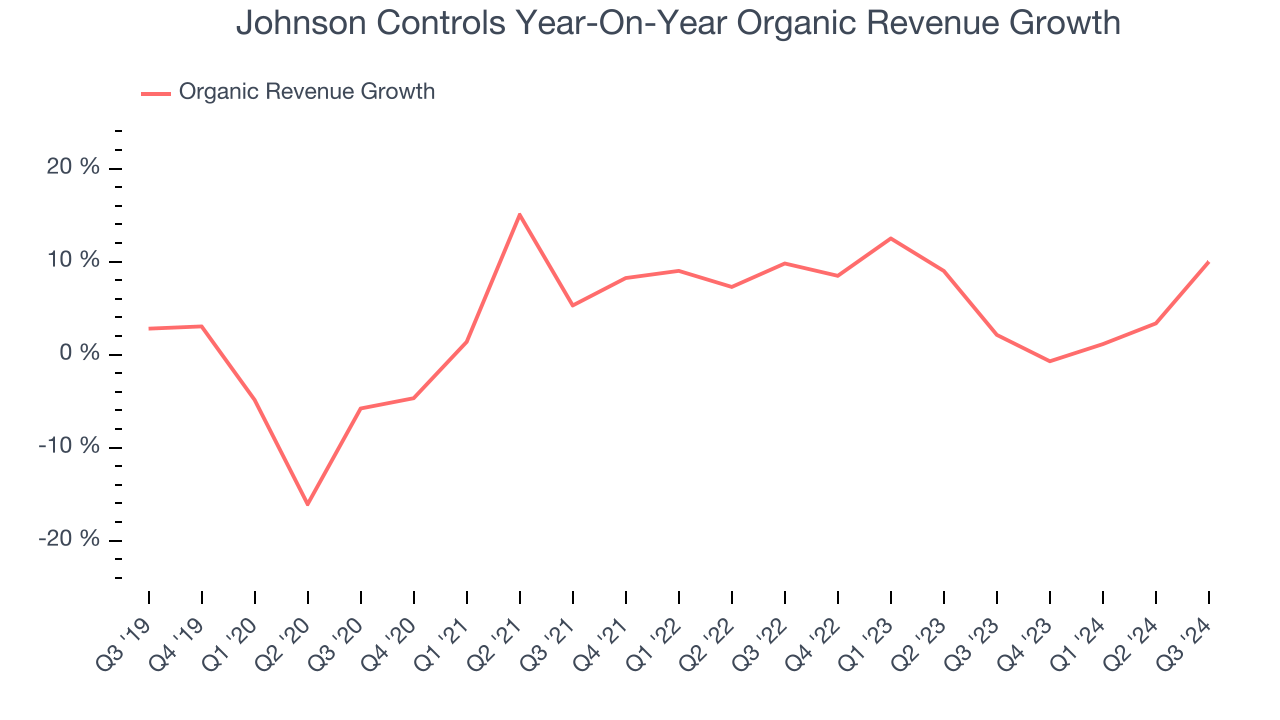
This quarter, Johnson Controls missed Wall Street’s estimates and reported a rather uninspiring 9.5% year-on-year revenue decline, generating $6.25 billion of revenue.
Looking ahead, sell-side analysts expect revenue to decline 8.2% over the next 12 months, a deceleration versus the last two years. This projection doesn't excite us and shows the market believes its products and services will see some demand headwinds.
Here at StockStory, we certainly understand the potential of thematic investing. Diverse winners from Microsoft (MSFT) to Alphabet (GOOG), Coca-Cola (KO) to Monster Beverage (MNST) could all have been identified as promising growth stories with a megatrend driving the growth. So, in that spirit, we’ve identified a relatively under-the-radar profitable growth stock benefitting from the rise of AI, available to you FREE via this link.
Operating Margin
Johnson Controls has done a decent job managing its cost base over the last five years. The company has produced an average operating margin of 8%, higher than the broader industrials sector.
Looking at the trend in its profitability, Johnson Controls’s annual operating margin rose by 3 percentage points over the last five years, showing its efficiency has improved.
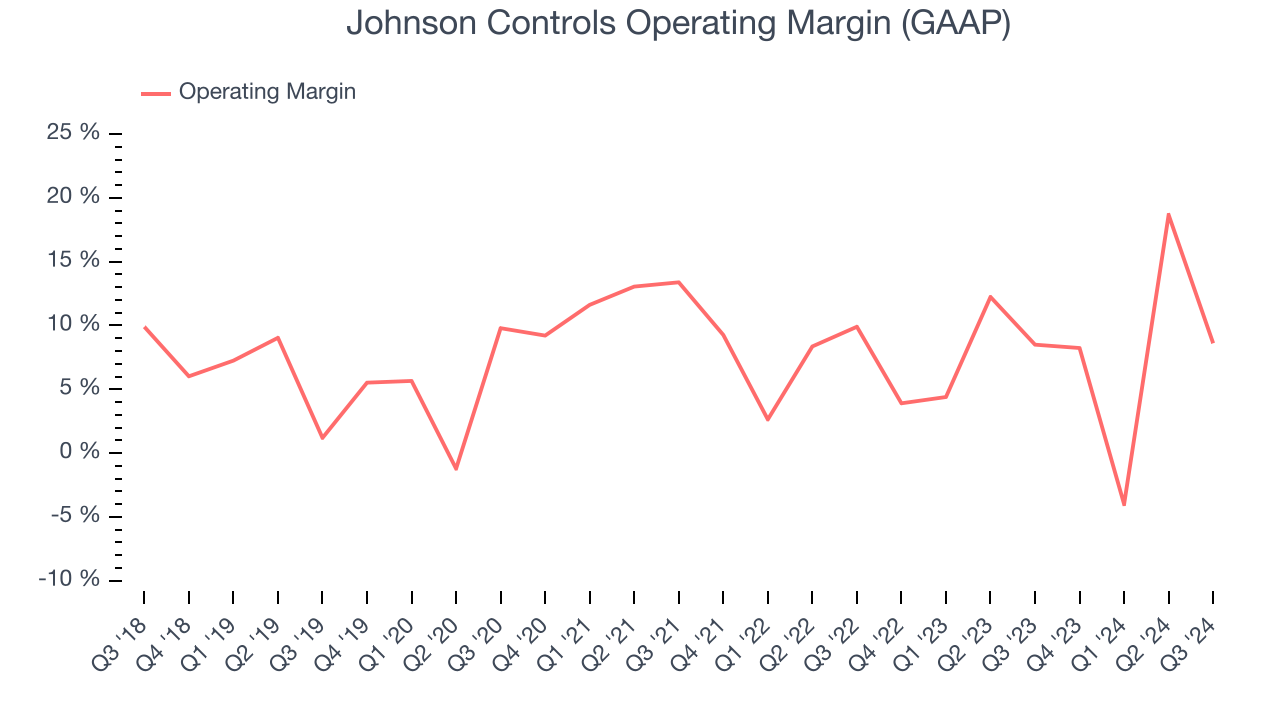
This quarter, Johnson Controls generated an operating profit margin of 8.6%, in line with the same quarter last year. This indicates the company’s cost structure has recently been stable.
Earnings Per Share
We track the long-term change in earnings per share (EPS) for the same reason as long-term revenue growth. Compared to revenue, however, EPS highlights whether a company’s growth was profitable.
Johnson Controls’s EPS grew at a remarkable 13.2% compounded annual growth rate over the last five years, higher than its 1.9% annualized revenue growth. This tells us the company became more profitable as it expanded.
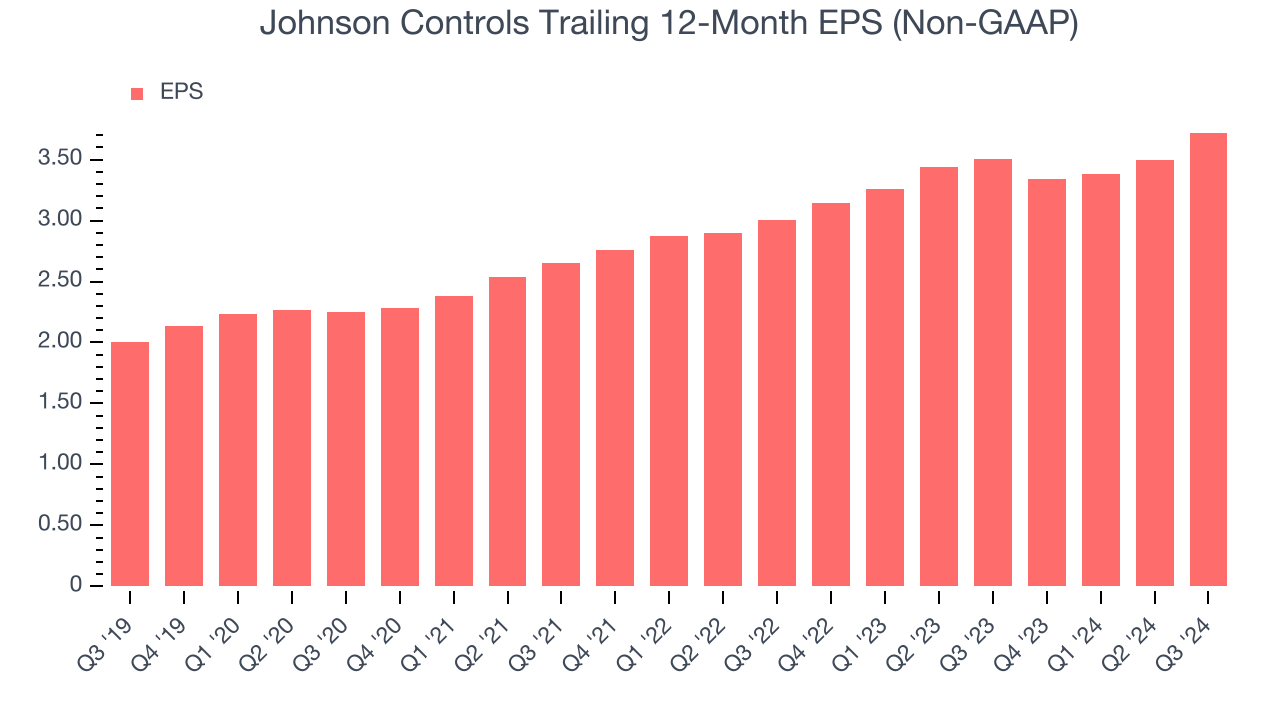
We can take a deeper look into Johnson Controls’s earnings to better understand the drivers of its performance. As we mentioned earlier, Johnson Controls’s operating margin was flat this quarter but expanded by 3 percentage points over the last five years. On top of that, its share count shrank by 16%. These are positive signs for shareholders because improving profitability and share buybacks turbocharge EPS growth relative to revenue growth. 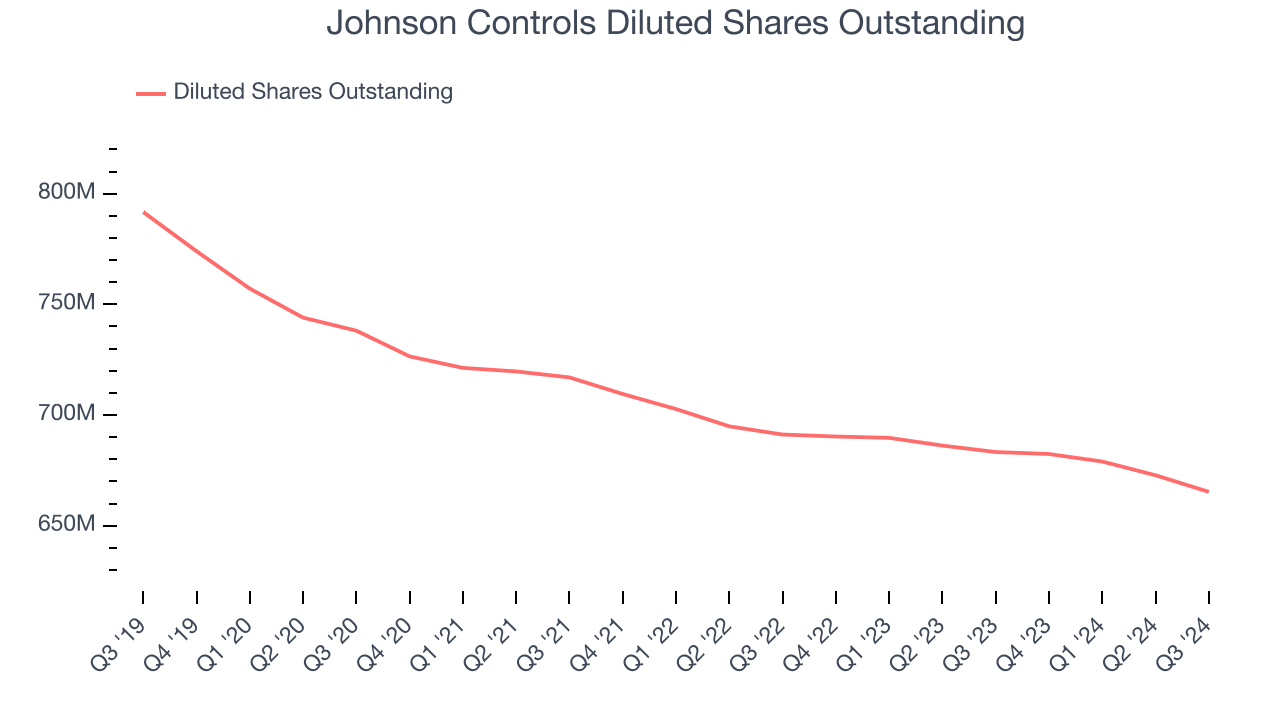
Like with revenue, we analyze EPS over a more recent period because it can give insight into an emerging theme or development for the business.
For Johnson Controls, its two-year annual EPS growth of 11.3% was lower than its five-year trend. We still think its growth was good and hope it can accelerate in the future.In Q3, Johnson Controls reported EPS at $1.28, up from $1.05 in the same quarter last year. This print beat analysts’ estimates by 2.6%. Over the next 12 months, Wall Street expects Johnson Controls’s full-year EPS of $3.72 to shrink by 3.7%.
Key Takeaways from Johnson Controls’s Q3 Results
We were impressed by how significantly Johnson Controls blew past analysts’ organic revenue expectations this quarter. We were also glad its EPS beat Wall Street's estimates. On the other hand, its EPS forecast for the full year missed. Overall, this quarter was mixed. The stock traded up 2.3% to $76.54 immediately after reporting.
Is Johnson Controls an attractive investment opportunity at the current price? When making that decision, it’s important to consider its valuation, business qualities, as well as what has happened in the latest quarter. We cover that in our actionable full research report which you can read here, it’s free.













